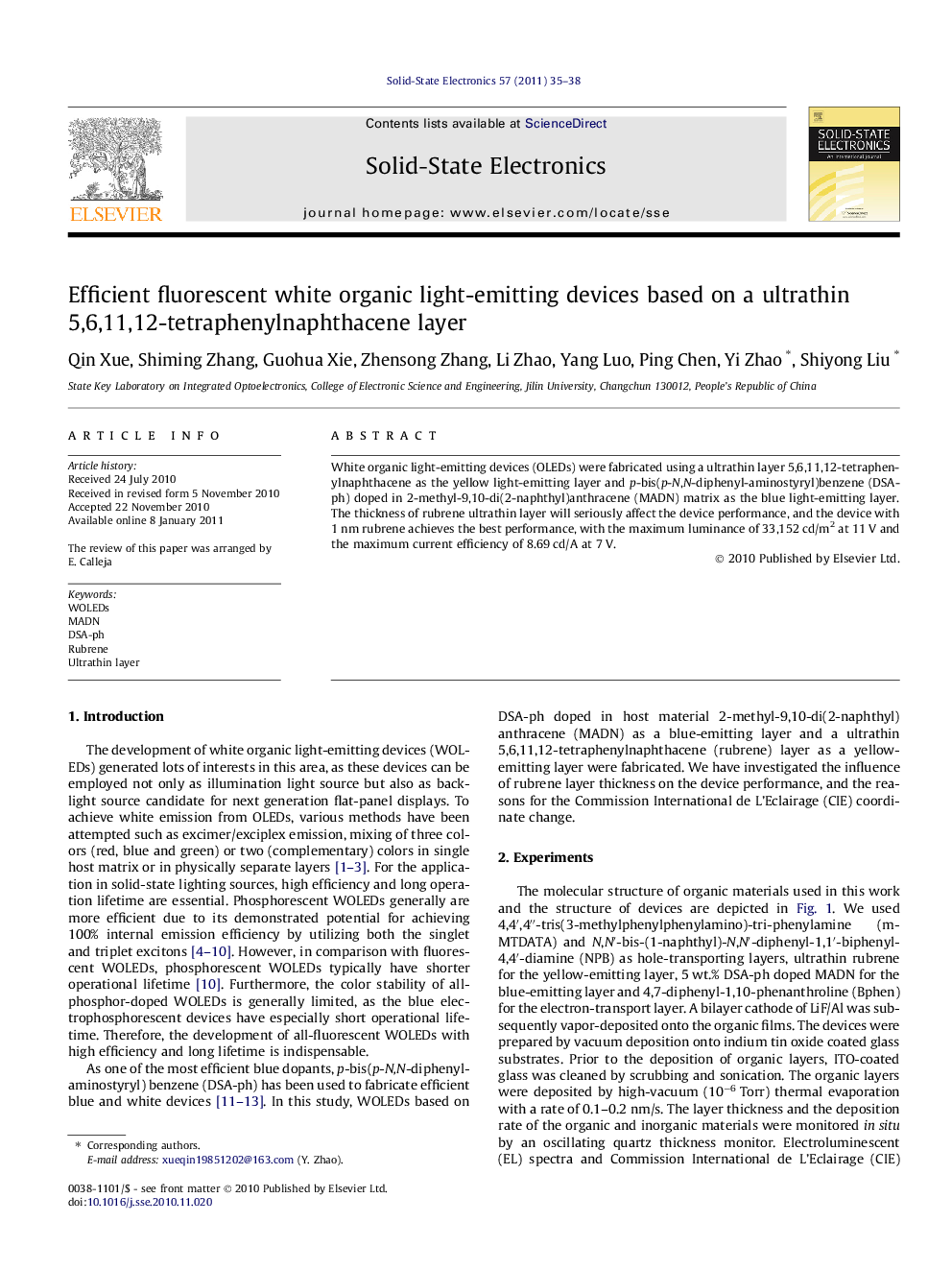| Article ID | Journal | Published Year | Pages | File Type |
|---|---|---|---|---|
| 748923 | Solid-State Electronics | 2011 | 4 Pages |
White organic light-emitting devices (OLEDs) were fabricated using a ultrathin layer 5,6,11,12-tetraphenylnaphthacene as the yellow light-emitting layer and p-bis(p-N,N-diphenyl-aminostyryl)benzene (DSA-ph) doped in 2-methyl-9,10-di(2-naphthyl)anthracene (MADN) matrix as the blue light-emitting layer. The thickness of rubrene ultrathin layer will seriously affect the device performance, and the device with 1 nm rubrene achieves the best performance, with the maximum luminance of 33,152 cd/m2 at 11 V and the maximum current efficiency of 8.69 cd/A at 7 V.
Research highlights► We for the first time combine ultrathin layer rubrene with the DSA-ph doped MADN layer in the device to obtain white light. ► We obtained all-fluorescent WOLED, which has comparatively high EL efficiency. ► We did deep research into the light-emitting mechanism of the device, and the reason for CIE change with increasing driving voltages.
